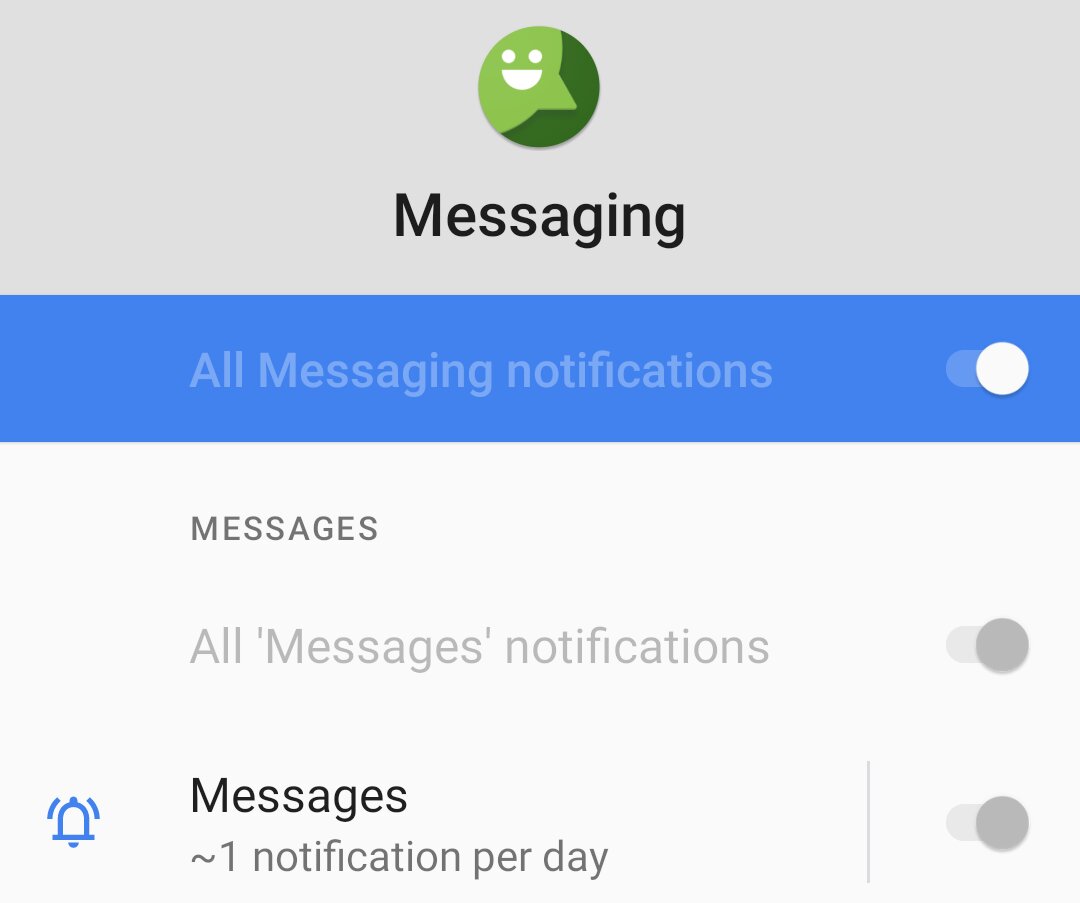Alex
Fixing Android Messaging Notifications
The Problem
For the most part Android is a great mobile OS. I have used deGoogled LineageOS for about the past year and a half, and have been very happy with it. However one major problem with it that I found is that you can’t change the notification settings for system apps.

Unfortunately messaging notifications channels are setup with the default priority, meaning that by default they won’t appear as a “heads up” notification (offending line NotificationManager.IMPORTANCE_DEFAULT" here):

By default system apps can’t have their notification settings changed (I assume so that important notifications can’t be disabled accidentally by the user), but I feel like that is too restrictive (maybe just specific system apps should be blocked).
Attempts To Fix
Config File
My first attempts to fix this problem were to look for where notification settings were stored. A quick DuckDuckGo revealed they were stored in /data/system/notification_policy.xml, with each app having its own package tag with notification channels defined in them.
<package name="com.android.messaging" show_badge="true"...>
<channelGroup id="conversation_group" name="Messages".../>
<channel
id="messaging_channel"
name="Messages"
importance="3"
priority="2"
sound="content://settings/system/notification_sound"
usage="5"
content_type="4"
flags="0"
lights="true"
vibration_enabled="true"
locked="153"
show_badge="true"
group="conversation_group" s
orig_imp="3" />
</package>
I decided to see how this data would react when changing notification settings, so I used another app and changed its settins whilst watching how this file was updated. I found that importance for a channel would update from 3 to 4 when enabling the “Pop on screen” (heads up) setting. I also saw the locked field, and my first experiment was to try changing that.
Making sure I was user system with su system, I edited the locked field to 0, and saved the file. This unfortunately didn’t unlock the channel options, since I think Android rolls back the file if it is changed without going through the proper means (using the NotificationManagerService - source). Also changing the value of importance wasn’t persistent, even after rebooting right after.
Trying Android service Command
My next attempt was to use the Android service command to try and change the settings. I found this helpful SO answer, and proceeded to use INotificationManager.aidl (source here) with the service command over ADB to mess with stuff:
Using method 10 from INotificationManager.aidl - boolean canShowBadge(String pkg, int uid), with notification badges for messaging turned off in the Android settings app
OnePlus5T:/ # service call notification 10 s16 "com.android.messaging" i32 10139
Result: Parcel(00000000 00000000 '........')
Now I enabled notification badges, and re-called the method; see the return value of 1 - badges are now enabled
OnePlus5T:/ # service call notification 10 s16 "com.android.messaging" i32 10139
Result: Parcel(00000000 00000001 '........')
After flicking through INotificationManager.aidl, I found no method to set the importance of a channel, and more experimentation and source code exploration didn’t yield a simple solution, so I had pretty much hit a dead end. I reckon I could have found a solution using this method, had I not found a much easier working solution detailed below.
The Solution
It turns out the config file approach would work fine, the only problem was I was editing the file whilst in a fully running Android environment (so the changes to the file were rolled back). The solution was to boot into recovery and edit the file, then clear cache and ART cache (I’m not sure if this was needed or not), then after rebooting, the settings were read from the file successfully; thus heads up notifications were enabled!

You can see the settings is still locked (unable to change it), however the toggle is enabled; and now com.android.Messaging has heads up notifications.

Links
- https://cs.android.com/ - very nice tool to search quickly though the Android sources
- https://developer.android.com/training/notify-user/channels - info about notification channels
- https://cs.android.com/android/platform/superproject/+/master:frameworks/base/services/core/java/com/android/server/notification/NotificationManagerService.java and https://cs.android.com/android/platform/superproject/+/master:frameworks/base/core/java/android/app/INotificationManager.aidl - files I found most useful to understand the internals of Android notifications
- https://github.com/LineageOS/android_packages_apps_Messaging/blob/lineage-18.1/src/com/android/messaging/datamodel/BugleNotifications.java#L945 - offending line in
com.android.Messagingthat disabled heads up notifications